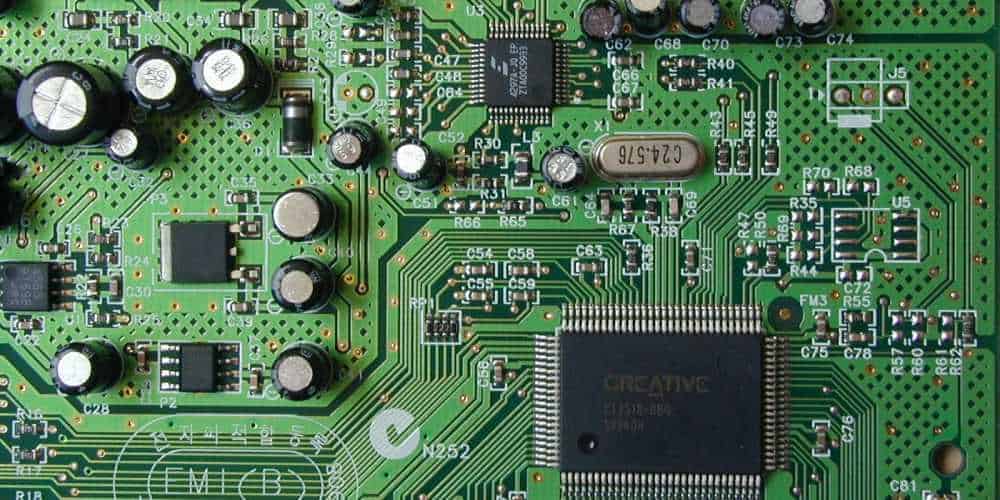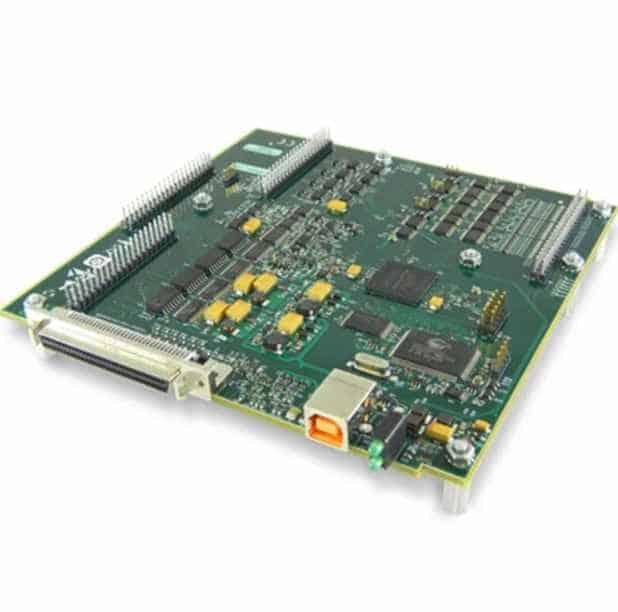The ability to quickly produce printed circuit boards (PCBs) is becoming increasingly important in many industries. For companies developing new electronic products, getting prototype boards fabricated in a fast turnaround time allows for faster design validation and testing. Likewise, having a responsive source for low-volume or bridge production PCB orders helps engineers verify design changes and fulfill small batch requirements rapidly.
When you need fully assembled boards in a hurry, choosing the right circuit board production partner is critical. Here are key factors to consider when selecting a manufacturer for your urgent PCB project:
Lead Times
The most fundamental consideration is how quickly a fabricator can deliver your finished boards. Most PCB manufacturers quote lead times in terms of working or business days. Typical lead times range from:
- 2 to 5 days for basic 2-layer boards
- 5 to 10 days for moderately complex 4-6 layer designs
- 10 to 15 days for multilayer (6+ layers) boards
However, capable manufacturers offer expedited services that can slash these lead times. For instance, some fabricators offer 24-hour or 48-hour turnaround on 2-layer boards for an additional fee. They keep part of their production capacity open for rush orders.
When inquiring about lead times:
- Ask how current order backlogs may impact the quoted lead time
- Specify your target need-by date and request they meet that delivery date
- Inquire about their fastest advertised turnaround time and associated upcharges
- Consider paying extra for the shortest possible lead time
Domestic or Overseas
Another factor impacting turnaround speed is production location. Using a domestic PCB manufacturer eliminates shipping time from overseas. Leading US fabricators offer 3-5 day or faster service by keeping Brady complex operations centralized in their American plants.
By contrast, relying on an Asian fabricator means 7-10 transit days for air freight delivery. This pushes the total turnaround time to 2-3 weeks typically. Domestic production becomes even more advantageous for very quick-turn orders.
Some US manufacturers also maintain operations in Asia. This gives them flexibility for regular orders while still offering fast domestic service.

Ordering Process
An efficient and automated ordering process helps expedite PCB fabrication. Capable manufacturers provide user-friendly online tools or software to:
- Upload design files directly
- Choose from a range of substrate, layer count, and finish options
- View pricing and order status
- Make fast design edits or change orders
Otherwise, you may waste 1-2 days emailing files and finalizing details through a prolonged manual back-and-forth.
Staying within the manufacturer’s standard specifications also prevents delays compared to requesting highly custom options. Similarly, keeping your board layout design-rule compliant as much as possible avoids issues during fabrication.
Board Assembly
For populated, soldered boards, assembly time also factors into the overall schedule. Some PCB manufacturers offer in-house assembly, but many outsource this step to partnering companies.
Either way, communication is vital to get an accurate production and shipment estimate. Supplying component procurement details immediately helps accelerate the process.
Expect approximately 3-7 days for assembly alone depending on complexity. Again, paying extra fees can help prioritize your board order through assembly.
Quality and Testing
A fast PCB turn does you no good if the boards arrive with defects. Reputable manufacturers conduct rigorous quality insurance testing after production. For quick-turn orders, ask how they condensed testing procedures without sacrificing reliability.
Prior to shipping, boards should undergo:
- Visual inspection of solder mask alignment, etc.
- Testing of electrical conductivity between traces
- X-ray imaging to check for shorts, open connections, and proper layer alignment
- For assembled boards, programming and functional tests to validate performance
A quick but low-quality board delivery leads to extensive debugging and another round of prototyping.
Design File Formats
To start production quickly, submit PCB design files in the optimal format:
- Gerber files are the standard for specifying PCB images, drill data, etc. They provide the most reliable transfer of your design data. Any manufacturer will accept Gerber files.
- IPC-2581 is an emerging format that bundles all fabrication data into a single ZIP archive for error-free handoff. Ask your fabricator about IPC-2581 capabilities.
- Native CAD formats like Altium or Eagle require the manufacturer to import your design. Data or connectivity settings can get misinterpreted or lost. Convert these files to Gerber yourself whenever possible.
By supplying Gerber files, you minimize the chance of data errors that cause manufacturing delays. Double check your files comply with the fabricator’s layer naming conventions. Use a Gerber viewer to visually validate the images before submitting.
Communication and Project Management
With quick-turn orders, ongoing communication ensures no details slip through the cracks. When delays happen, you want a fabricator that provides prompt issue notifications and resolution.
- Request a single dedicated point of contact for your order. Avoid confusion over who is handling your job.
- Ask for email/phone updates at key production milestones.
- Check if they offer project management websites or software to track real-time progress.
- Confirm they will contact you immediately in case of any problems with your files or order details.
By partnering with a responsive, communicative manufacturer, you give your urgent PCB project the best chance of meeting your fast-track schedule.
Choosing the Best Fast Turn Fabricator
Not all manufacturers are equipped for rushed prototyping orders. When picking a PCB production partner for your project:
- Ask detailed questions about their quick-turn capabilities and typical lead times
- Review online customer testimonials regarding their expedited services
- Look for rapid yet realistic turnaround times promised on their website
- Inquire about dedicated expedite production lines and shift staffing
- Check for order process automation and file checking assistance
- Evaluate their quality management for rush orders
- Determine if they offer assembly and how that impacts scheduling
- Assess ease of communication and order tracking they provide
By thoroughly vetting prospective fabricators, you can select the one truly capable of the fast response you need.

Cost Considerations
Inevitably, accelerated turnaround comes at a premium price. However, the ability to shave days or weeks off your PCB fabrication schedule can justify the extra expenditure in many situations.
Typical expedite fees include:
- 25-50% upcharge for next day/24 hour service
- 10-25% for 2-3 day service
- Reduced upcharges for 5 day or one week delivery
Assembly and component procurement rush fees may apply as well. Also budget for upgraded shipping to receive boards faster.
Still, compressing your development timeline by 1-2 weeks for a moderate premium fee is advantageous for many projects. Just factor appropriate quick-turn expenses into your budget.
Table 1 summarizes typical turnaround times and associated fees to give you an idea of costs:
| Turnaround Time | Typical Lead Time | Expedite Fee | Assembly Lead Time | Total Time (PCB + Assembly) |
|---|---|---|---|---|
| Standard | 5-15 days | None | 5-7 days | 10-22 days |
| 5 Day | 5 days | 5-15% upcharge | 5 days | 10 days |
| 3 Day | 3 days | 15-25% upcharge | 5 days | 8 days |
| 2 Day | 2 days | 25-50% upcharge | 3 days | 5 days |
| 24 Hour | 1 day | 50-100% upcharge | 2 days | 3 days |
Conclusion
From prototyping to ramping up small production, getting PCB orders fulfilled quickly is often imperative. By selecting a capable domestic manufacturer, submitting optimized design files, paying rush fees when feasible, and closely tracking orders, engineers can receive boards with abbreviated lead times.
Partnering with a responsive fabricator that prioritizes communication and troubleshooting helps guarantee an accelerated schedule. While quick turns cost more, the advantage of speeding up development many days or weeks outweighs the premium price for urgent projects.
Frequently Asked Questions
What are some instances when fast turnaround PCB fabrication is crucial?
Some examples of when rapid fabrication is essential:
- Prototyping new products under tight deadlines
- Verifying design changes quickly after discovery of issues
- Obtaining small batches of boards faster for field testing
- Accelerating iterative testing by getting boards quicker
- Responding to short-notice market or customer requests
- Supporting R&D engineers who require boards urgently
- Fulfilling unexpected orders between scheduled production cycles
How can I prepare design files to help expedite PCB fabrication?
- Supply Gerber files rather than native CAD files to avoid conversion issues
- Ensure your Gerber files match the manufacturer’s layer conventions
- Review the PCB images for errors before submitting your order
- Include any necessary file processing instructions for the fabricator
- Request a quick design rule check and resolve any layout problems
- Avoid highly dense designs that complicate rapid fabrication
What details should I confirm when getting a quote for fast PCB delivery?
- Double check that the manufacturer can meet your requested turnaround time
- Have them specify what days constitute their working/business days
- Ask if current order backlogs or other commitments might cause delays
- Clarify if their online lead time estimator accounts for expedited service
- Understand exactly what fees apply for your desired quick-turn delivery
- Get assembly time estimates and confirm if components are available
How does order complexity affect the ability to manufacture boards rapidly?
In general, less complex boards can be produced faster:
- 2-layer designs allow quicker fabrication than high layer count boards
- Avoiding flex circuits and rigid-flex boards simplifies fast fabrication
- Common FR-4 material is easier to procure compared to exotic substrates
- Typical SMD components have better availability than special package types
- Keeping board size under 8″ x 10″ utilizes panel space efficiently
- Minimizing board thickness and layers lowers lamination time
What steps does an expedited PCB order undergo to ensure quality?
Even quick-turn boards should be thoroughly validated:
- Automated optical inspection checks solder mask, legend print, and other visual features
- Net connectivity and electrical testing verifies proper isolation between traces
- X-ray is used to detect any inner layer alignment problems or buried defects
- For populated boards, comprehensive functional testing will be conducted
- All boards are closely examined for any signs of physical damage as well



0 Comments